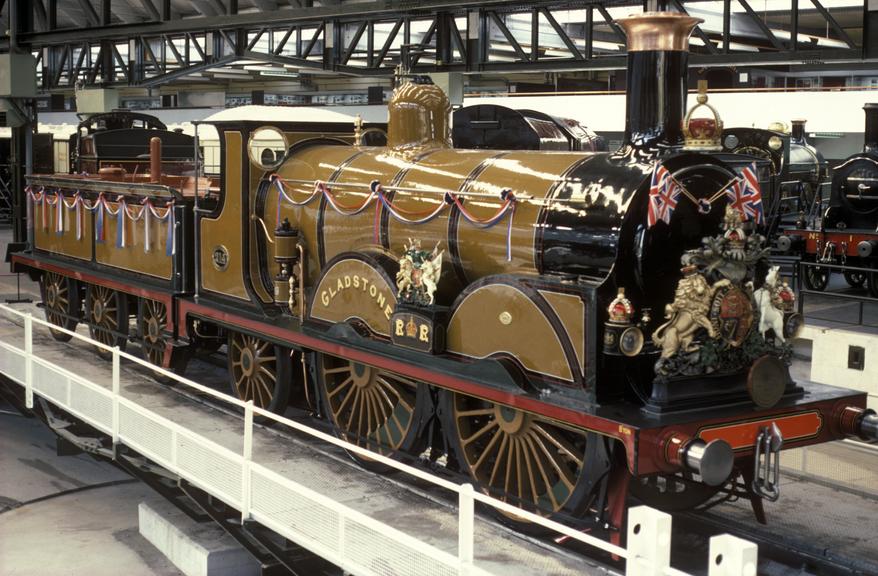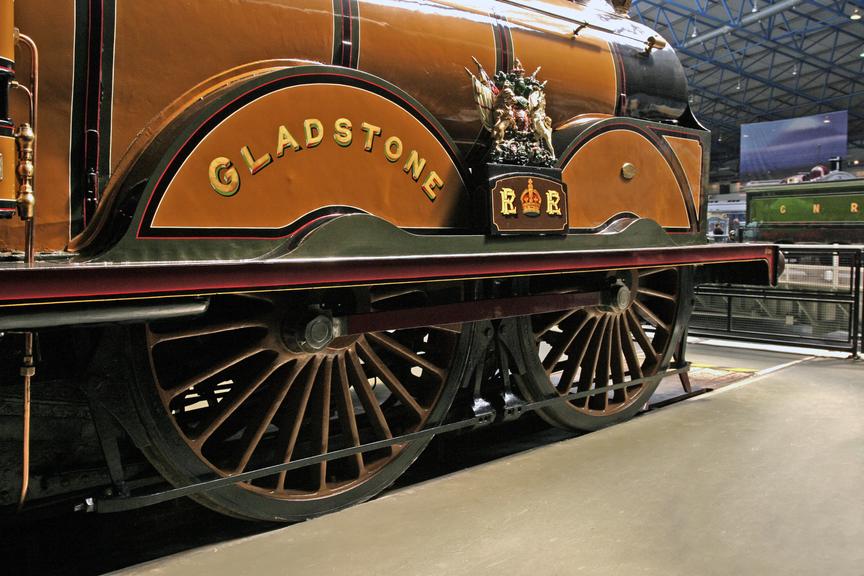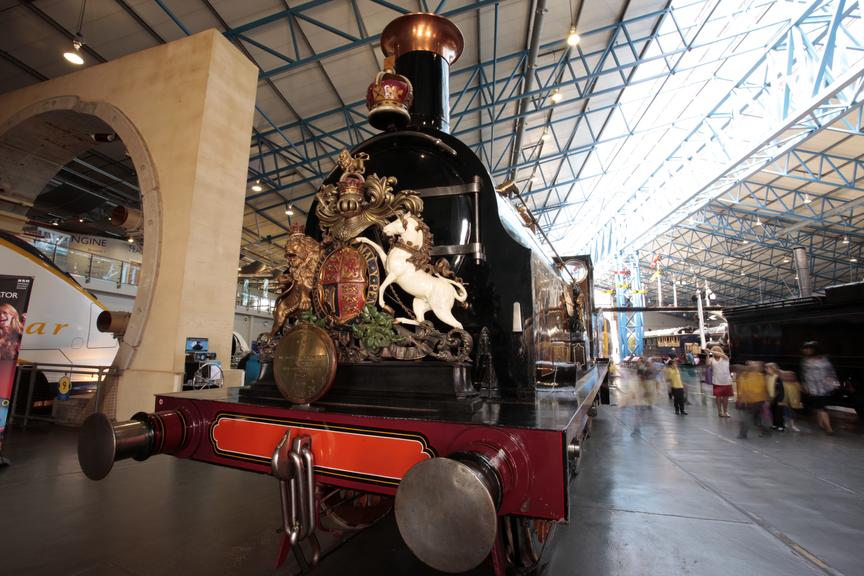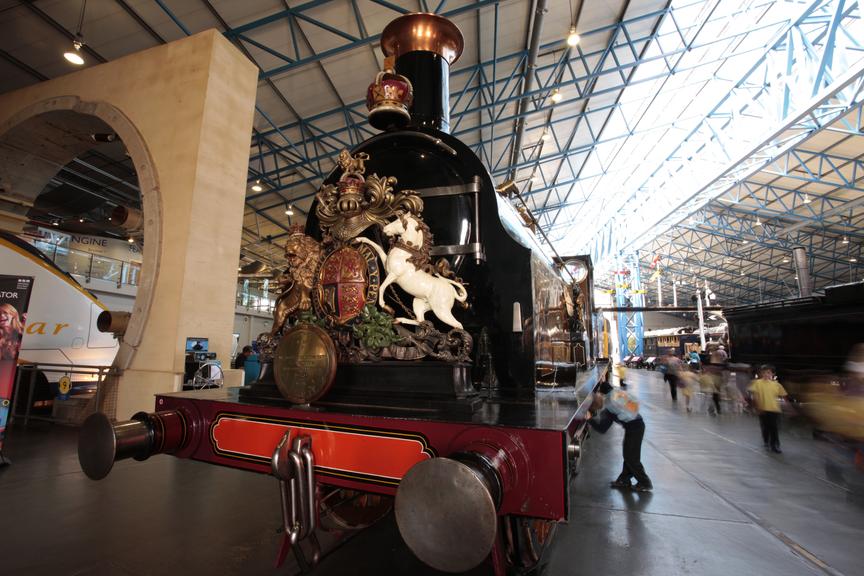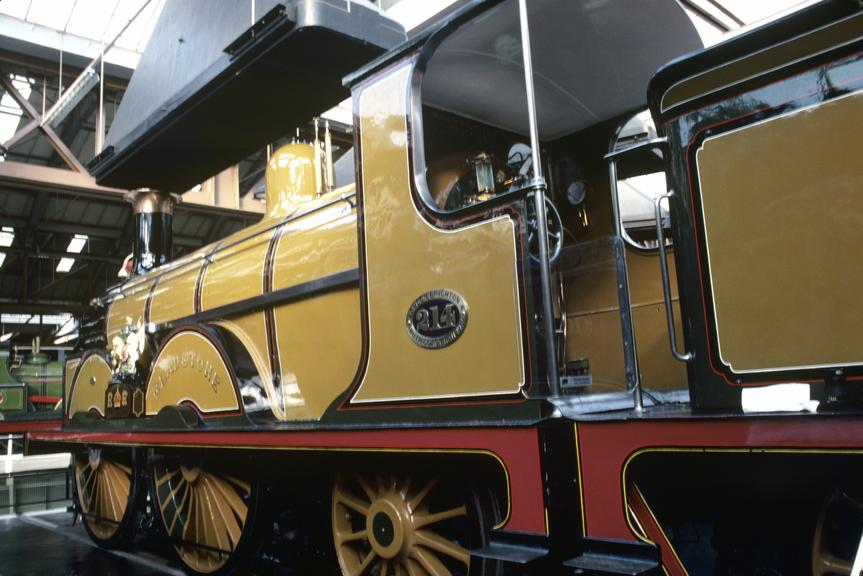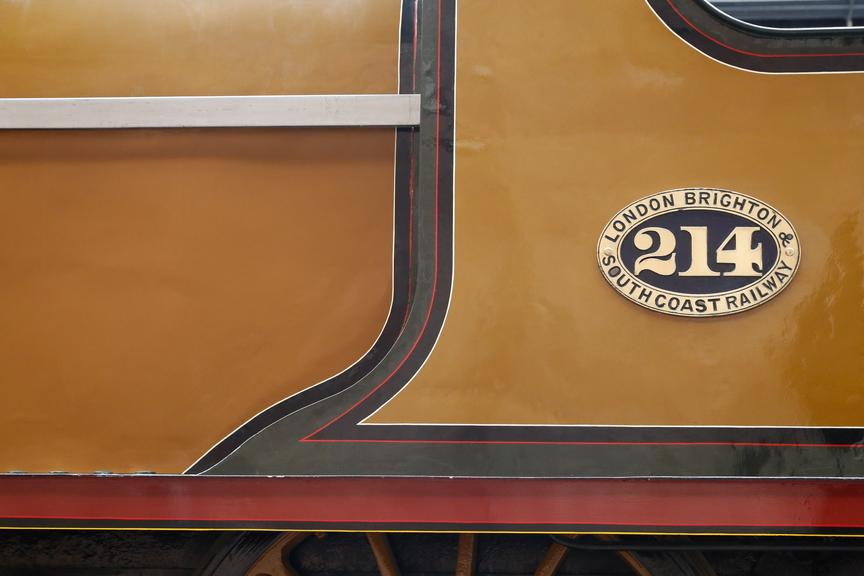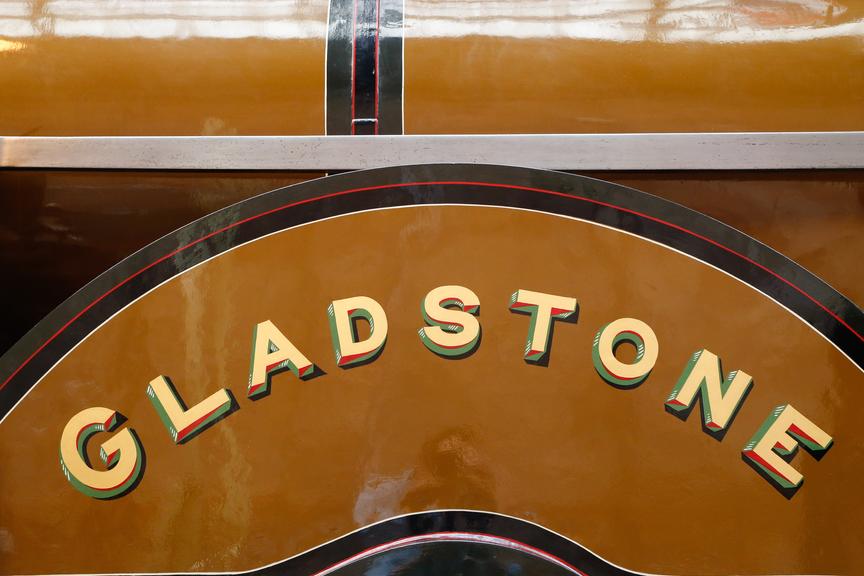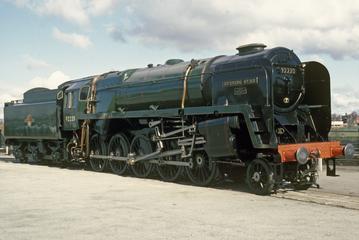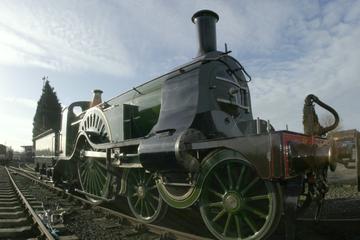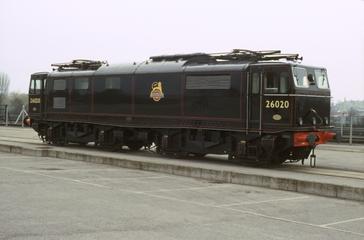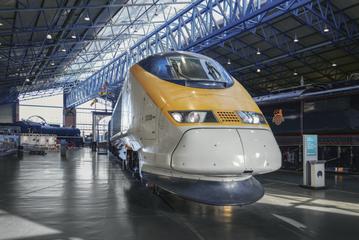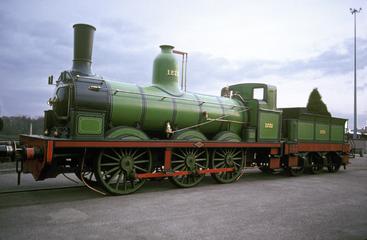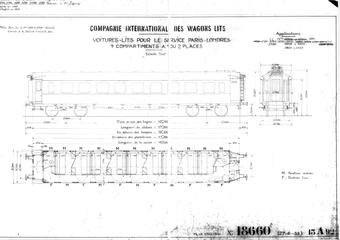London Brighton & South Coast Railway locomotive Gladstone
Steam locomotive and tender, London Brighton & South Coast Railway, 0-4-2 No 214, "Gladstone", designed by William Stroudley, built at Brighton in 1882, withdrawn 1927.
More
Gladstone was designed by William Stroudley and built in 1882, one of 36 similar locomotives built between 1882 and 1891. It went into service at Brighton in January 1883 and was withdrawn in December 1926, having travelled 1,346,918 miles.
This locomotive is the sole surviving example of an express engine with its driving wheels in the leading position. At a time when most British companies favoured passenger engines with the driving wheels at the rear, Stroudley may have been influenced by the fact that the Brighton line was fairly short and had practically no sharp curves where speeds would be high. Furthermore, its train schedules rarely necessitated speeds much above 60mph.
Essentially, the ‘Gladstone’ type was an enlargement of two previous Stroudley 0-4-2 tender classes. Stroudley thoroughly evaluated his new design before it was decided upon to build more – eventually 36 examples of this type of locomotive were built and construction continued until 1891, two years after Stroudley’s untimely death.
Gladstone was purchased by the Stephenson Locomotive Society in 1927 for preservation, and after being exhibited at Brighton and Waterloo, was sent to the then London & North Eastern Co. museum at York.
In 1959 Gladstone was given by the Stephenson Locomotive Society (celebrating its Jubilee Year) to the British Transport Commission, with the agreement that the engine would be repainted in its original colouring and lining. During the repainting the BTC took the opportunity to present the engine in as true to its original form as possible.
William Stroudley was Locomotive Carriage & Marine Superintendent of the London, Brighton & South Coast Railway, and apart from Gladstone he was well known for his “Terriers”, specially designed for the severe gradients and light rails of the East London Railway.
- Measurements:
-
overall: 2540 mm x 15799 mm, 38000 kg
- Materials:
- steel (metal) and brass (copper, zinc alloy)
- Object Number:
- 1975-7017/1
- type:
- steam locomotive
- Image ©
- The Board of Trustees of the Science Museum



















